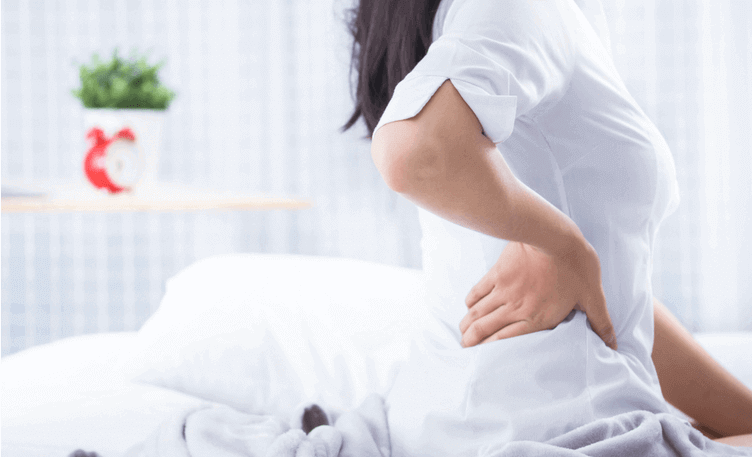Spine Health: Treating Spinal Cord Injuries

The spinal cord acts as a messenger for your body. It relays information from your brain to the rest of your body and back to your brain. Your brain and spinal cord together make up the Central Nervous System (CNS). The main functions of the central nervous system are to:
- Process information received through sensory systems and other parts of the body
- Activate appropriate actions/respond to external or internal stimuli
The spinal cord plays an important role in muscle and sensory input. Any kind of injury to your spinal cord can cause severe damage to your physical functioning.
What Happens When Your Spinal Cord Suffers an Injury?

Your spinal cord acts as the primary message pathway between your brain and all the other nervous systems of your body. It receives sensory information from the skin, joints, and muscles of the trunk, arms, and legs, which it then transports to the brain. It carries messages downward from the brain to the PNS (Peripheral Nervous System).
The main function of the PNS is to connect the CNS to your body, serving as a relay between your brain and spinal cord. Your spinal cord also contains motor neurons which are responsible for voluntary movements.
What Are the Types of Spinal Cord Injuries?
The spinal cord is divided into four sections: cervical, thoracic, lumbar, and sacral. Each section of your spine has a different role to play, and the type and severity of your spinal cord injury will depend on the part of the spine that is affected.
-
Cervical Spinal Cord Injury
Injury in the cervical section of the spinal cord is the most severe, considering it is located closest to the brain. If there is an injury in the cervical area of the spinal cord, it will result in tetraplegia or paraplegia - a total or partial paralysis of the lower part of your body.
-
Thoracic Spinal Cord Injury
The thoracic spine is located in the upper and middle part of the back. It handles the stability and balance of your body. Injury to this section of the spinal cord can lead to paraplegia of the lower back muscles and legs.
-
Lumbar Spinal Cord Injury
The lumbar spine is located below the thoracic section and is the lowest major part of your spinal cord. It features longer vertebrae and carries the most weight of all the sections of the spinal cord. An injury to the lumbar spinal cord results in loss of function in the hips and legs.|
-
Sacral Spinal Cord Injury
The sacral spine is situated below the lumbar spine and above the tailbone (coccyx). Injuries to the sacral spinal cord are rare and occur only with a serious incident like a fall or trauma to the area.
People with arthritis or osteoporosis may also be at risk of a sacral spinal cord injury. Nerves in the sacral spine region control pelvic organs like the bladder and sex organs. Injury to this region may lead to a total or partial loss of voluntary control of bowel movements. However, it can be managed with specific equipment.
Spinal Cord Injuries are classified into two categories :
-
Complete Spinal Cord Injury: Causes a total loss of all motor and sensory functions below the injured section. More than 50% of all Spinal Cord Injuries are complete, and both sides of the body are affected.
-
Incomplete Spinal Cord Injury: Allows a person to move partially, below the injury level. It is also called Incomplete Tetraplegia and accounts for 40.8% of all Spinal Cord injuries.
How Are Spinal Cord Injuries Treated?

Spinal Cord Injury treatments aim at preventing further damage to the injury. It provides relief to the patient, helping him or her return to normal life.
If you’ve been involved in a motor vehicle accident, for example, and injured your spinal cord, emergency personnel will immobilise the spine to avoid any further trauma. Once you’re admitted to the Emergency Room or a Spine Injury Centre, you will be treated with different medications, immobilisation, and surgical methods. This will help stabilise your spine and prevent further injury.
Rehabilitation After Treatment for a Spinal Cord Injury

Once you’ve been treated at the initial stages, the focus will shift on preventing secondary problems like:
- Deconditioning (change in previously learned behaviour)
- Muscle contractions,
- Pressure ulcers,
- Bladder and bowel issues,
- Respiratory infections,
- Blood clots.
Rehabilitation specialists will help you strengthen your muscle function, redevelop your motor skills, and learn techniques to accomplish your daily tasks with minimal help.
Apart from this, you’ll be introduced to new technologies that will make coping simpler for you. Automated wheelchairs, robotic gait training, electronic applications etc are some of the newest technologies to help you get back to your normal life.
This #WorldSCIDay, consult your doctor for the best possible treatment and rehabilitation method for your #SpinalCordInjury.






